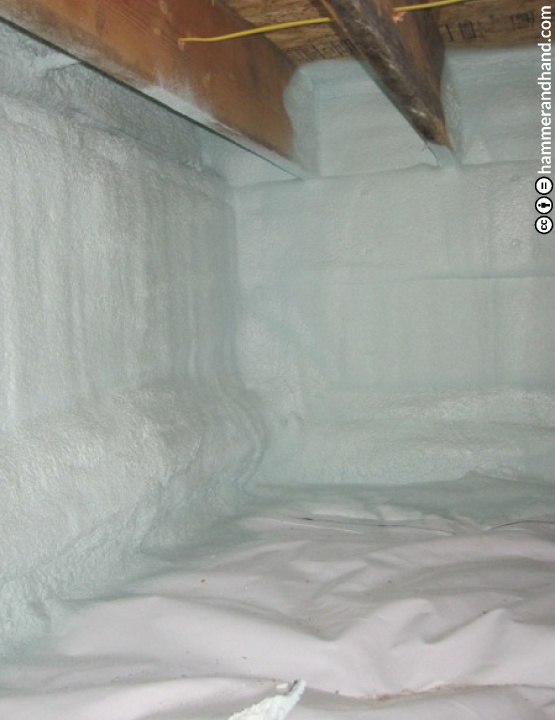8.1 Crawlspaces: General Guidelines
Options:
1. New Construction: Conditioned Crawlspace with Insulated Slab (8.2)
- Treating the crawlspace like a mini-basement with an insulated wall and slab is the highest performance crawlspace option.
2. Retrofit: Conditioned Crawlspace with Soil-Barrier (8.3)
- This is the best retrofit option in crawlspaces that contain mechanicals or ductwork, or are interconnected with a conditioned basement.
- Install a Sealed Seam heavy duty (12 mil) soil barrier to seal the space from water vapor and soil gasses.
3. Retrofit: Vented Crawlspace with Floor Encapsulation (8.4)
- Acceptable option for crawlspaces without mechanicals or ductwork.
- Install new plastic soil barrier with lapped seams. Heavy duty soil barrier with sealed seams optional.
- Air space should be maintained between floor and spray foam if underfloor hydronic tubing is being used for radiant heat.

To Know Before Building or Retrofitting a Crawlspace:
- Moisture management: all surface and ground water must be properly managed prior to sealing and insulating a crawlspace.
- DO NOT route ductwork through unconditioned attics or crawlspaces. All water supply lines must be insulated even in a conditioned crawlspace.
- Cleanup: crawl must be thoroughly cleaned of all dust and debris after construction is complete and any damage to the soil barrier must be repaired.